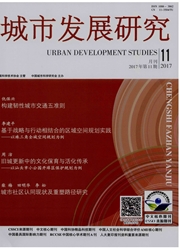

 中文摘要:
中文摘要:
城市空间仿真系统(UrbanSim)为构建城市土地利用和交通空间一体化模型提供了基础平台。以写字楼市场为研究对象,基于企业选址和写字楼开发选址的相关理论构建了写字楼市场供给(开发选址)与需求(企业选址)一体化模型,通过地理信息系统(GIS)建立了北京市写字楼开发/价格、企业选址及城市基础设施和公共服务的空间数据库,并在I_lrbanSim平台上利用这些空间微观数据对写字楼市场一体化模型进行了标定。利用已标定的一体化模型,论文进行了城市政策效果和城市发展的情景模拟,包括轨道交通建设对企业选址和开发选址的影响,以及北京市两个重要的商务办公区(商务中心区和金融街)功能区扩张的预期效果。
 英文摘要:
英文摘要:
UrbanSim provides a good platform for the spatial integrated modeling of land use and transportation in a city or a region. In this project authors focus on the spatial modeling in Beijing's office market. Taking advantage of the firm location choice and real estate development location choice theories in office market, they set up a spatial integrated model of the demand and supply of office spaces in Beijing. This model is calibrated using a GIS-based database of Beijing's office building developments, prices, firm locations, infrastructure and public services. They employ this model to simulate the outcomes of several urban development policies in Beijing, i. e. , new urban subway system construction, and the spatial expansions of the CBD area and Financial Street area.
 同期刊论文项目
同期刊论文项目
 同项目期刊论文
同项目期刊论文
 期刊信息
期刊信息
